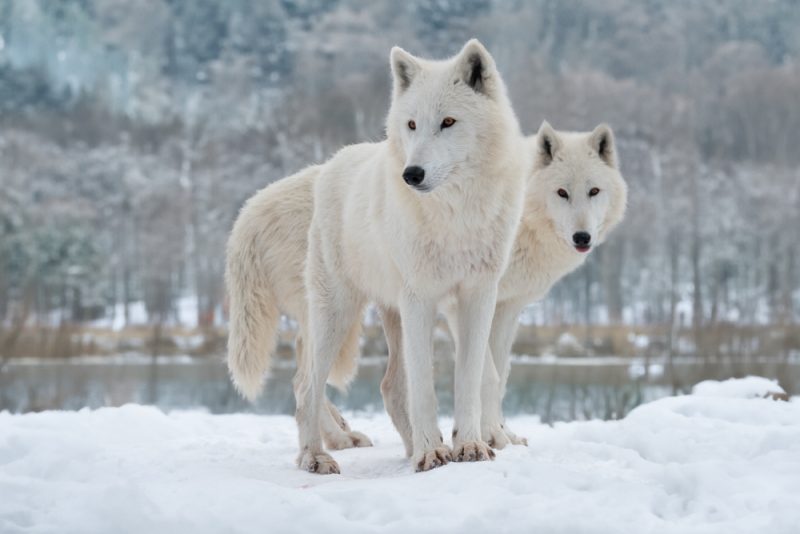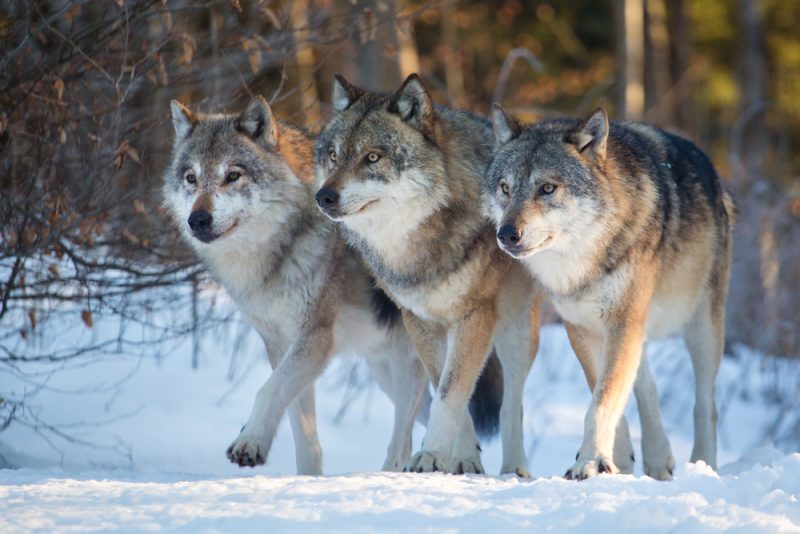For over three a long time, the world has been equal components exhilarated and terrified by the thought of bringing dinosaurs again to life, and it’s an idea that reveals no indicators of changing into extinct anytime quickly. Because of a staff of scientists at Colossal Laboratories and Biosciences, the primary and solely de-extinction firm, this explicit space of science could also be one step nearer to being reality, not fiction…or is it?
The US firm just lately made headlines by asserting that in October 2024, they’d efficiently introduced the dire wolf again to life, within the type of Remus and Romulus, named for the dual brothers who, in line with historic mythology, had been raised by a she-wolf and accountable for the founding of Rome. Three months later, they had been joined by a feminine pup named Khaleesi, a reputation plucked from the phenomenally well-liked Sport of Thrones collection. In fact, critical followers might take umbrage on the concept of the Stark household sigil being named after the Mom of Dragons!
Whereas it could be straightforward to be distracted by the hype surrounding such an thrilling scientific breakthrough, one wants solely scratch the floor of Colossal’s analysis to see that this will not be the enormous leap in genetics they’d have us imagine.

The Colossol Motion
The razzle dazzle of Collosal’s web site feels much less like that of a genetics lab, and extra like an infinite gross sales pitch, dripping with sufficient buzzwords and hyperbole to get any investor’s coronary heart racing.
Beneath the guise of sustainability and species preservation, Colossal are hoping to “return the dire wolf to its rightful place within the ecosystem” after a ten,000-year absence, with the Woolly Mammoth subsequent on the de-extinction checklist. Whereas their plans to carry again animals just like the Dodo or Thylacine (aka Tasmanian Tiger), whose disappearance from the planet was the direct results of mindless over-hunting, could also be thought-about a noble try and proper some human wrongs, one has to surprise in regards to the advantage of reintroducing creatures whose demise was the results of pure choice. To which “rightful place within the ecosystem” are they referring?
A genetically distinct species from extant canines, the dire wolf – Aenocyon dirus – disappeared from the Earth round 10 to 16 thousand years in the past. Though the time of their extinction has some overlap with the arrival of people on the North American continent, most paleontologists imagine that the enormous canine predator was merely unable to compete with the smaller, extra agile canid species.
Equally, one other focus of Colossal’s de-extinction program, the Woolly Mammoth, turned extinct round 10 to 12 thousand years in the past. A detailed relative, however not ancestor, of as we speak’s elephant species, the mammoth’s extinction has been attributed to the shift in habitat and ecosystems seen on the finish of the Pleistocene epoch. Though the strain of searching by people might have been a function because the ice age drew to a detailed, it’s unlikely to have been important sufficient to play a significant position of their extinction.

What Is De-Extinction, and Why Is It Occurring?
The animals that Colossol claims to have introduced again from extinction are dire wolves in identify solely. As a consequence of an absence of viable DNA present in fossilized stays, the animals created in Colossol’s lab are the results of manipulating the genes of the common gray wolf, Canis lupus, to create an analogue to the dire wolf, and its classification as Aenocyon dirus is controversial.
Though the query of whether or not or not Remus, Romulus, and Khaleesi are certainly dire wolves is up for debate, Colossal’s scientists are excited for what their creations might imply for different de-extinction and species preservation efforts.
One of many more difficult facets of bringing a species again from the brink of extinction is the inherent lack of genetic range inside a dwindling inhabitants. By genetic manipulation, scientists are hopeful that they’ll enhance this range inside a pure inhabitants, giving an endangered species a greater probability of survival, and that is the true worth of their groundbreaking work. It’s maybe just a bit much less headline-grabbing than bringing a species again from extinction.
Why the Dire Wolf?
You would possibly surprise why Colossal would select to start out with a species that was not a sufferer of contemporary searching or habitat destruction, or one with a bit extra ‘wow’ issue. Because of Sport of Thrones, the dire wolf has simply sufficient star energy to seize headlines, while not being so physiologically different from modern-day wolves as to be problematic when it comes to care and husbandry – the perfect ambassador for much less ‘thrilling’ species.
It appears unlikely that reintroducing a species just like the dire wolf is an finish sport mission for the corporate, however one that’s attention-grabbing sufficient to draw the eye of the general public and traders, upon whose assist all future ventures will little question rely.

What Are the Implications of De-Extinction?
It will be straightforward to be caught up within the potentialities and potential of de-extinction, not solely from an ecological perspective but in addition from an evolutionary one.
Your scientists had been so preoccupied with whether or not or not they may, they didn’t cease to assume if they need to. Ian Malcolm, Jurassic Park
The place do they go?
The extinction of a species doesn’t occur in isolation, significantly once we are speaking about an apex predator or an vital prey species. When their numbers dwindle, the species round them will prosper or undergo in consequence, one thing that isn’t at all times thought-about. How would as we speak’s ecosystem deal with the reintroduction of the dire wolf?
Even these species whose more moderen extinction has been by the hands of contemporary people might discover themselves unable to reintegrate right into a habitat or meals chain that has adjusted to their absence. And positively, we can’t hope to carry again such animals earlier than first addressing the problems that wiped them from the planet within the first place.
Who do they belong to?
When a personal firm is behind the recreation – or certainly, creation – of an animal species, do they personal the rights to that animal? Might such possession rights outweigh the rights and welfare of the animals themselves? And the way lengthy earlier than curious geneticists or exploitative capitalists begin experimenting with interspecies hybridization?
Plainly as expertise advances, the road between science and science fiction turns into much less distinct, and the movies we as soon as suspended actuality to take pleasure in might grow to be cautionary tales.
The issue inherent in privately funded scientific development is that its continued existence and progress rely vastly on its means to draw and retain traders. And for each entrepreneur and philanthropist who seeks to assist and protect ecological range, there might be one other who’s simply as eager to take advantage of it. Recreating an envoy species just like the dire wolf to generate assist for conservation analysis is comprehensible, however it’s a door, as soon as opened, that might be very laborious to shut, particularly as soon as dinosaurs begin coming by way of it.
Maybe this cynic has simply watched too many Jurassic Park movies, but when it’s a selection between warning and restraint over an Indominus Rex, I do know which one I’m selecting.
Trending Merchandise

ZuPreem FruitBlend Bird Pellets, Daily Bird F...

ZuPreem Sensible Seed Bird Food, Parakeet, Bu...

Kaytee Forti-Diet Pro Health Egg-Cite Nourish...

Best Nest Wellness Mama Bird Probiotics ̵...

Kaytee Fiesta Macaw Food, Nutritious and Fun ...

Pet Eye Cream Health for Dogs, Cats, Cattle, ...





